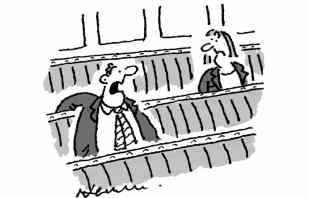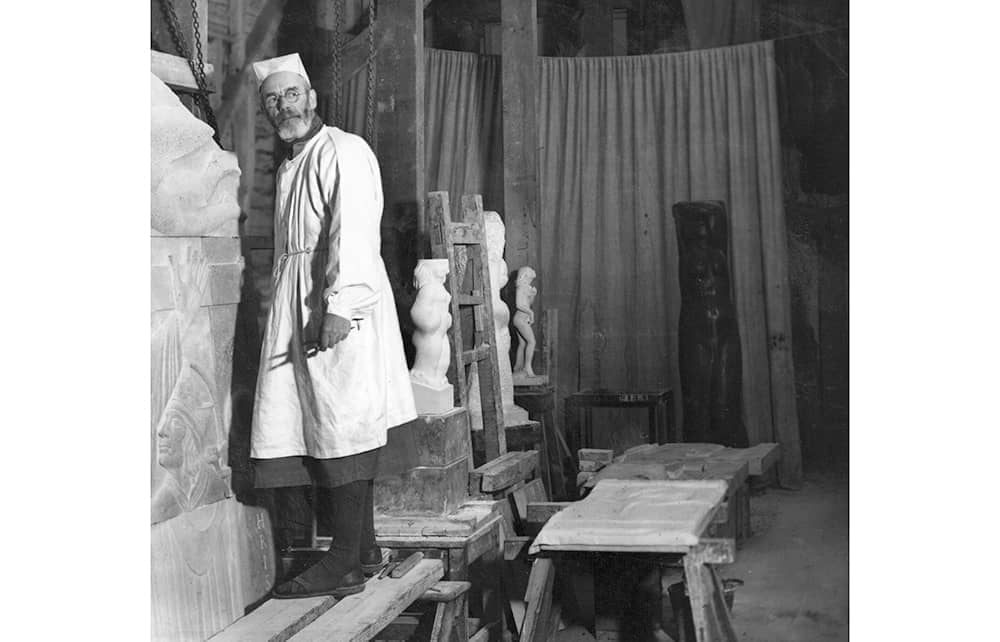Eric Gill was an incestuous paedophile and his own letters prove it, but the value of his work can run into millions of pounds. So it was a surprise to hear rumours that auction house Christie’s will no longer be accepting his art. Will they really be turning away all Gills, even the masterpieces? I asked one Christie’s employee for confirmation. ‘Yes,’ they said. ‘It would not be consistent to refuse to sell the Gill trifles but continue to sell his masterpieces.’ The Christie’s press office said they wouldn’t comment, which is a shame because the decision raises interesting questions.
Why single Gill out? Christie’s will keep selling art by murderers such as Caravaggio (if they can find it) and next month they will be selling work by Balthus, an even more expensive artist who often eroticises children. Picasso made explicit drawings of his lover’s adopted 13-year-old daughter, but it’s unthinkable that Christie’s would stop selling his pieces. By rejecting Gill’s whole body of work yet continuing to accept art by more expensive reprobates, Christie’s have made themselves look like hypocrites.

Perhaps they have decided to cancel Gill because he’s recently made the news. At the beginning of the year a man with a hammer attacked Gill’s carving of Prospero and Ariel on the front of the BBC’s Broadcasting House. Days before, four men who had toppled a sculpture of the slave trader Edward Colston had been acquitted of causing criminal damage. But these two attacks are fundamentally different. It’s one thing to say that you shouldn’t celebrate a slave trader but it’s quite another to say that an artist’s work should be judged by his life, and that it’s legitimate to destroy work by artists whose lives we think immoral.
The new Christie’s policy is also damaging to its clients. As one of the two major global auction houses in this country, Christie’s will inevitably reduce Gill’s value by removing him from their marketplace – making his work less expensive. In this way they will be hurting the interests of people they have encouraged to buy work by Gill in the past. And if an auction house and its employees feel unable to handle works by Gill then it is unlikely that a public museum will want to continue to hang them. Christie’s will have created an environment in which trustees and directors have to ask themselves whether they should glorify a child abuser. When the question is phrased like this, it becomes infinitely easier and safer to say no.
No one doubts that Gill was a bad man. His deviant sexual experiments are well known. To his biographer, Fiona MacCarthy, there was nothing so ‘absolutely shocking’ as ‘his long record of incestuous relationships with sisters and with daughters’. But up to this point galleries have tried to simply contextualise art that imports too many uncomfortable elements. Sometimes this is done with a label, and sometimes even by commissioning other work. For one Gill exhibition (Eric Gill: The Body, in 2017) the Ditchling Museum went as far as to commission a contemporary artist, Cathie Pilkington RA. She made an installation called ‘Doll for Petra’ in which she tried to rescue the identity of Gill’s daughter. Some of Gill’s best drawings and engravings are of Petra – ‘Girl in Bath’ and ‘The Plait’, for instance. It’s clearly better to make sense of them, as the Ditchling Museum did, than to never handle them.
Great art transcends the character of its maker. Consider Derek Jarman, the gay artist and filmmaker, whose garden at Dungeness, created while he was dying of Aids, was recently saved with massive grants of public and some private money. Jarman writes that ‘boys who’ve had the good fortune at 14 or 15, or even earlier, to meet older men are nearly always more at ease with themselves sexually’. The value of Jarman’s work doesn’t depend on how he led his life, and what’s true of Jarman is just as true of Gill.






Comments